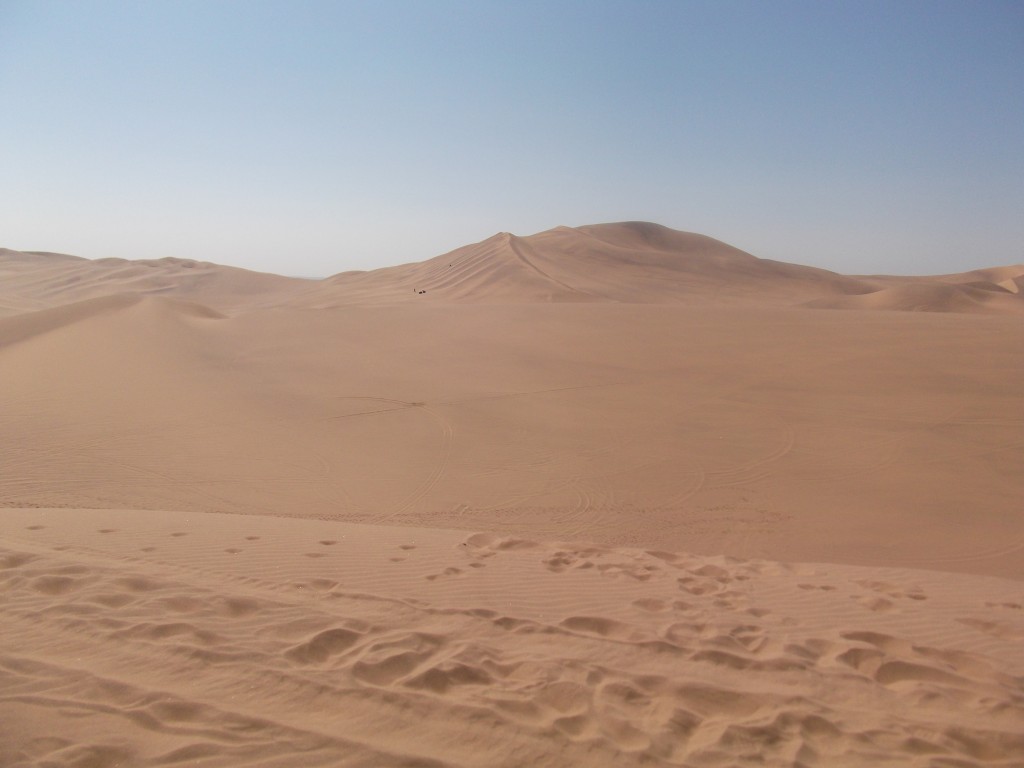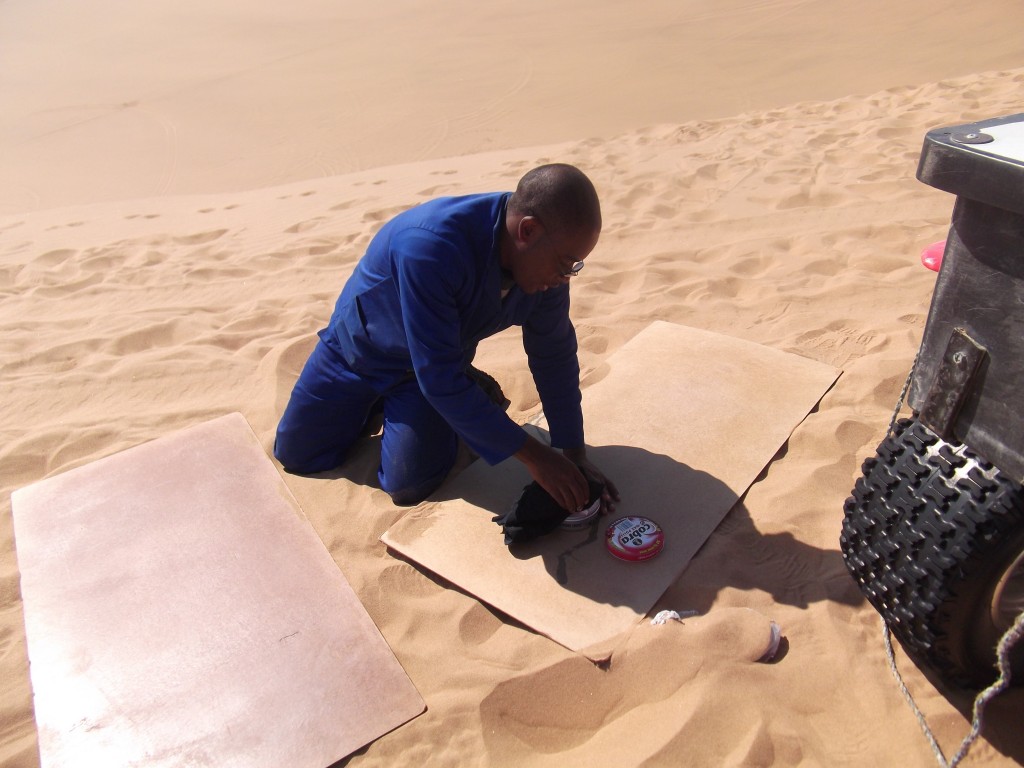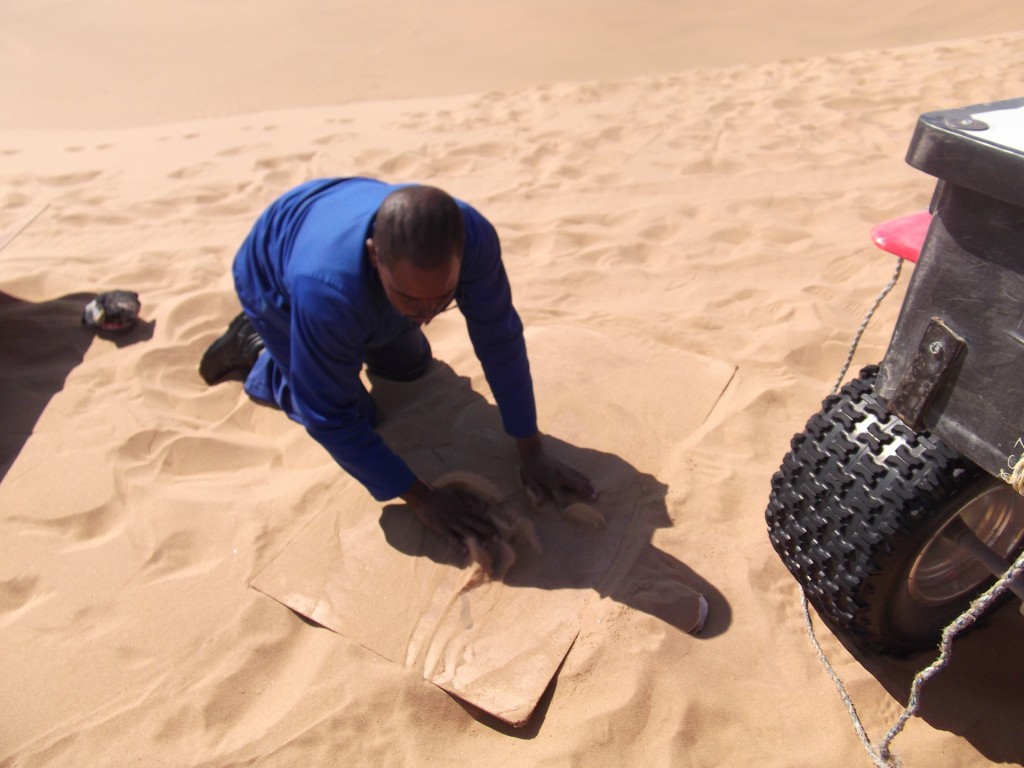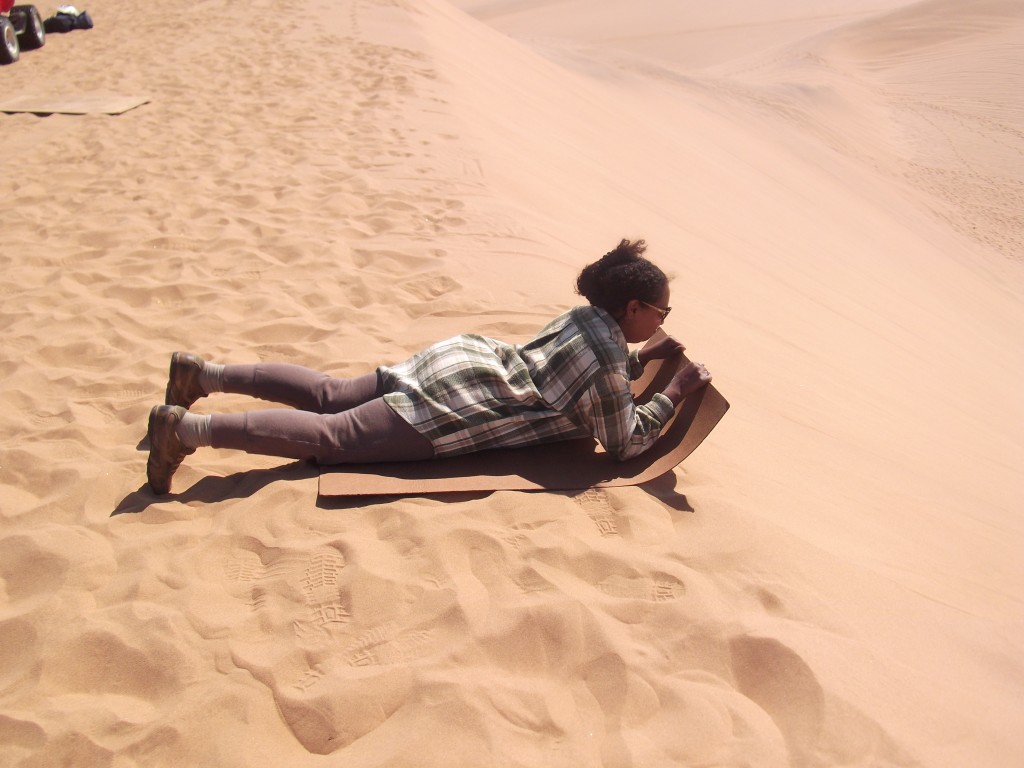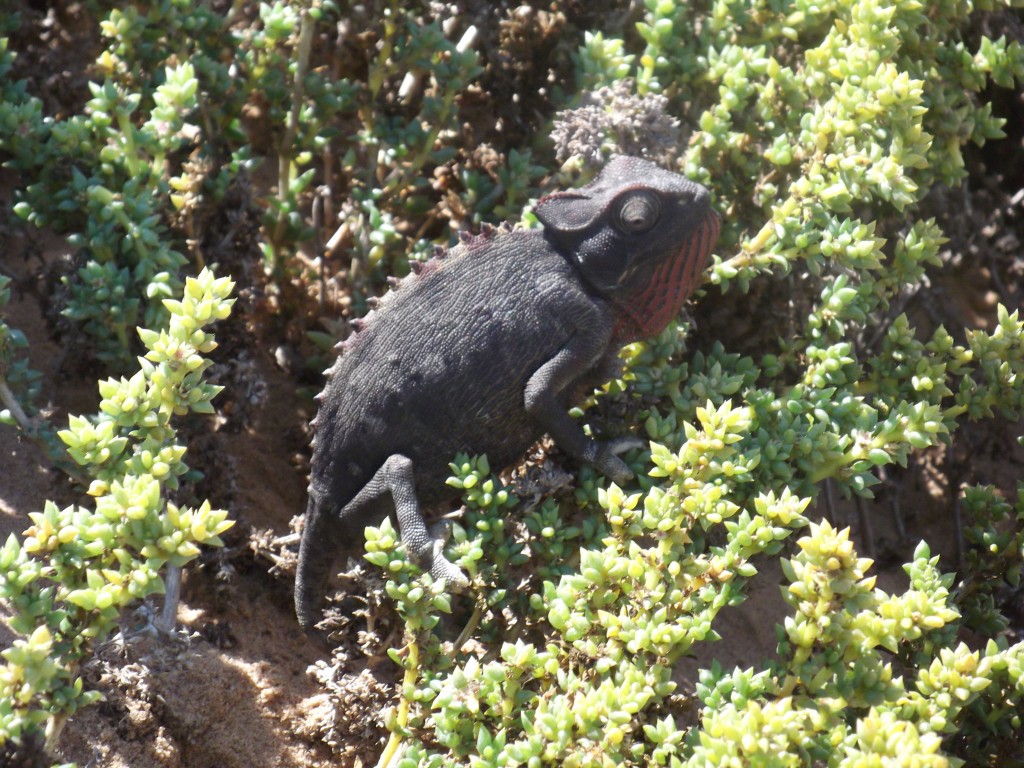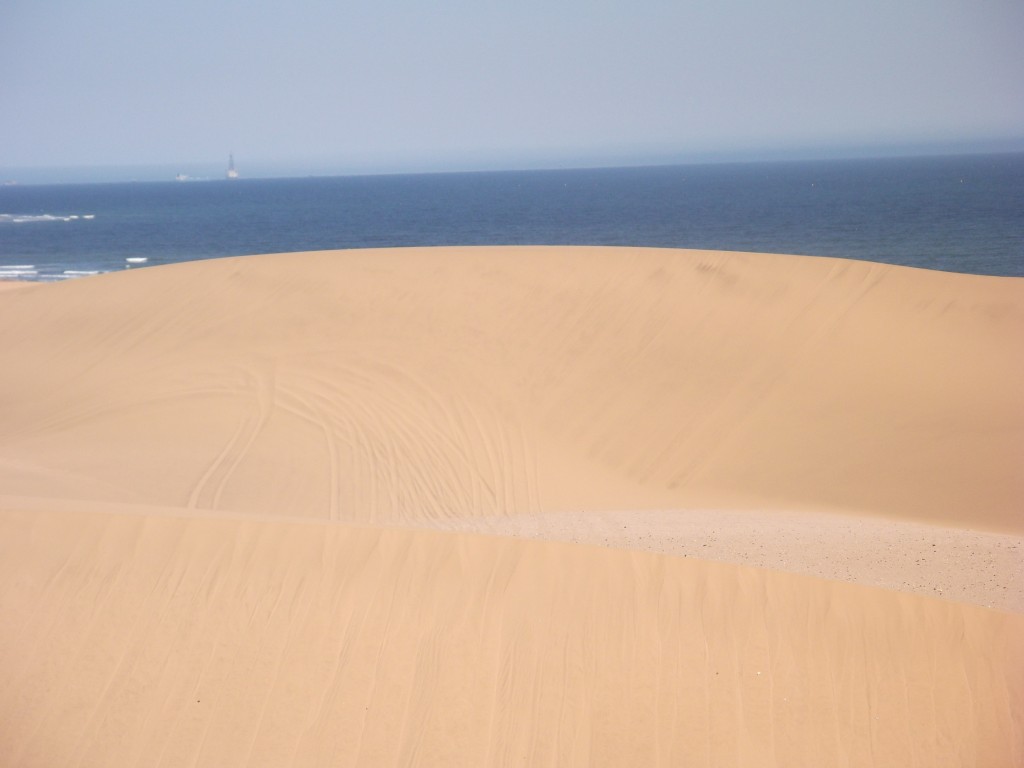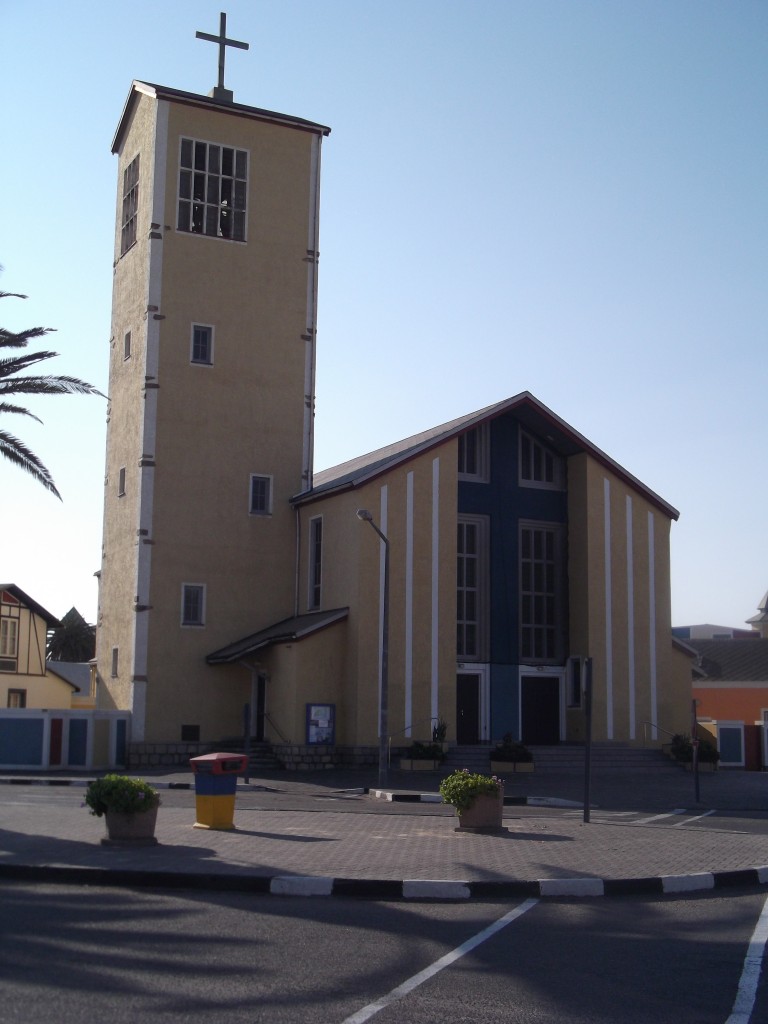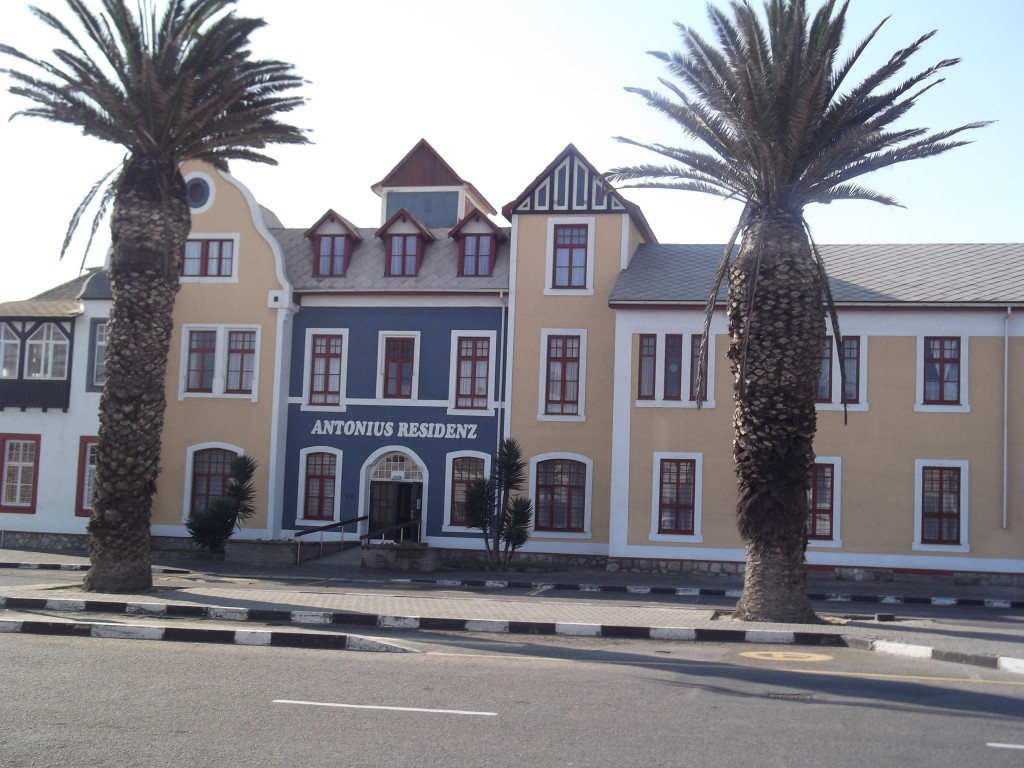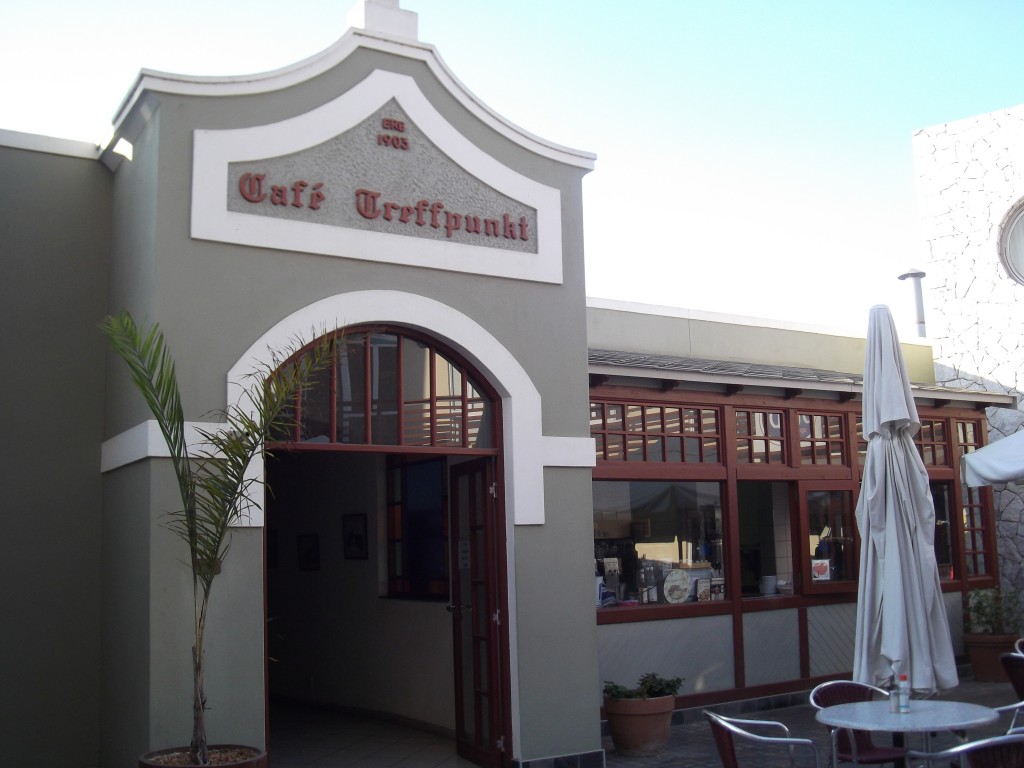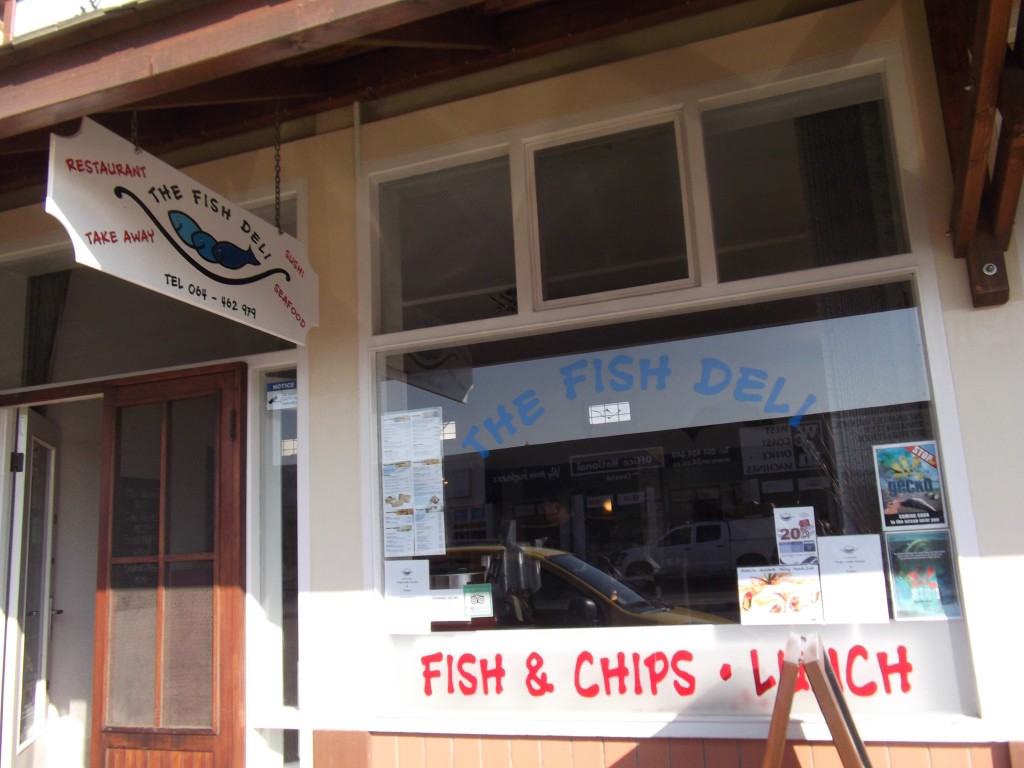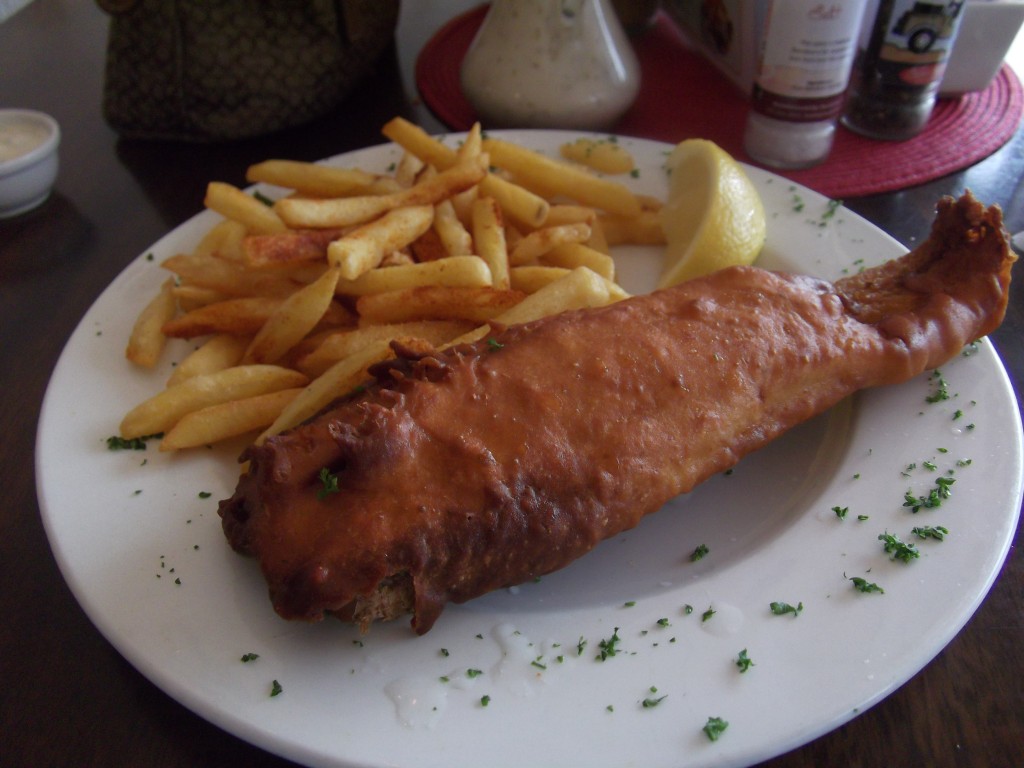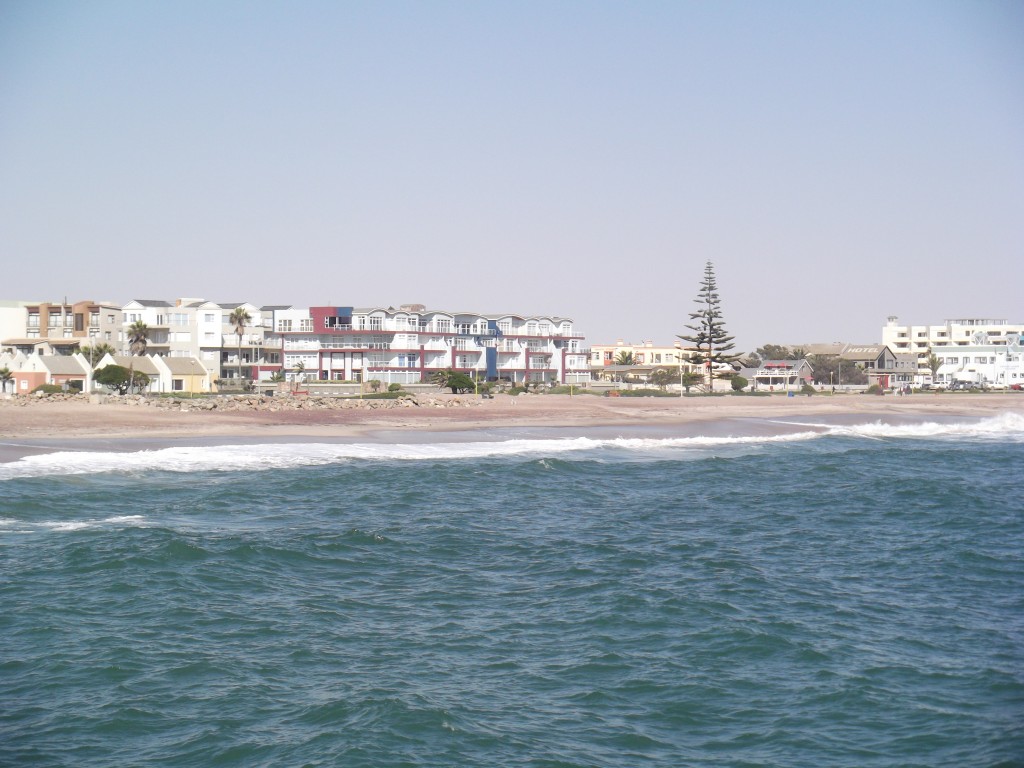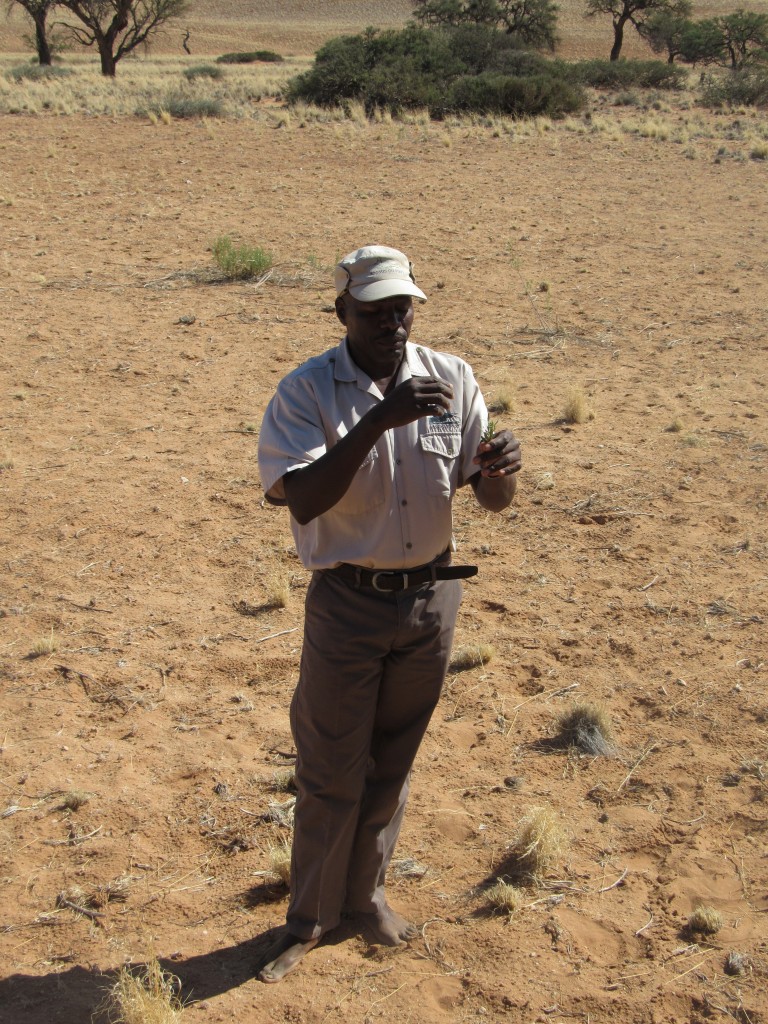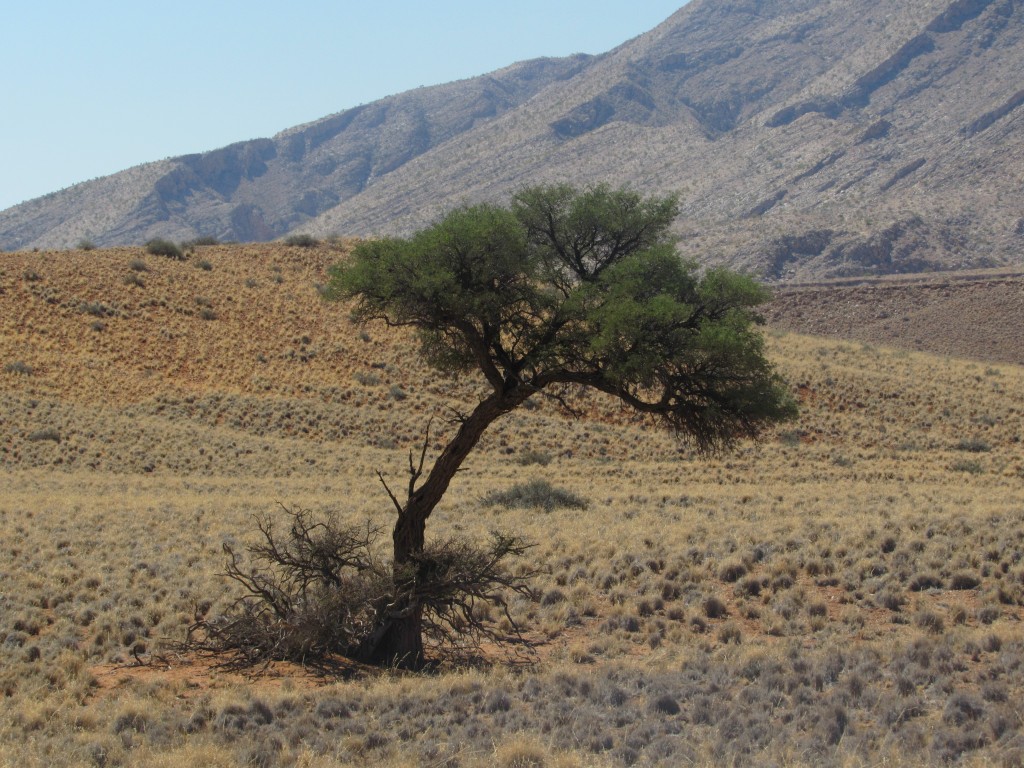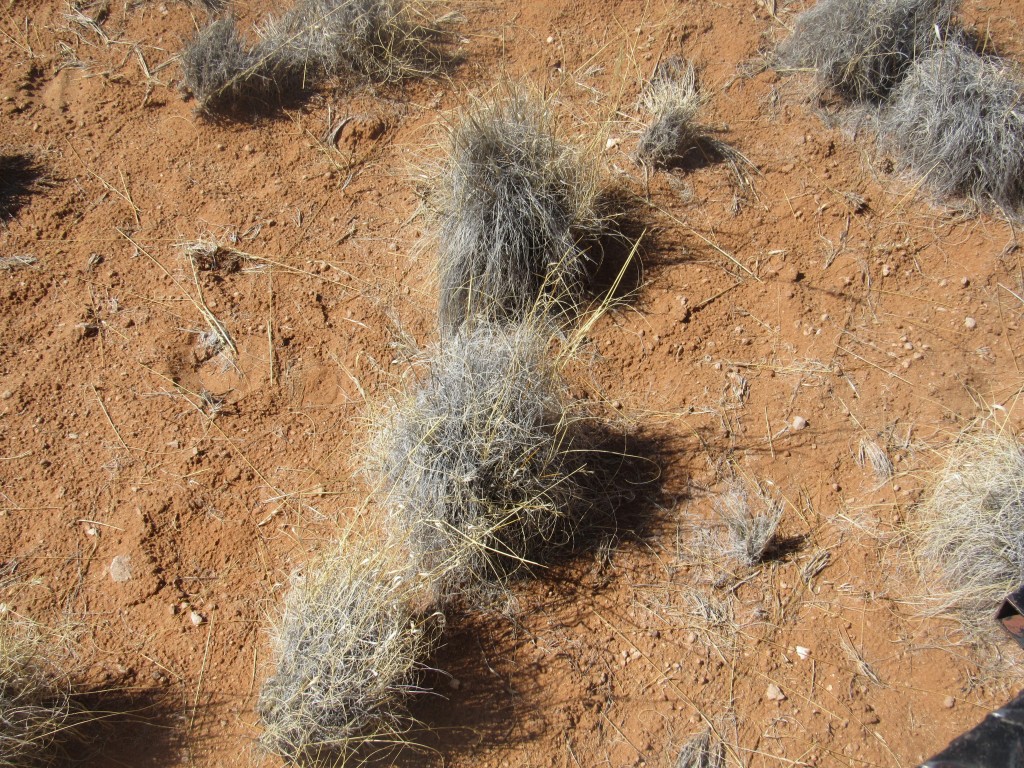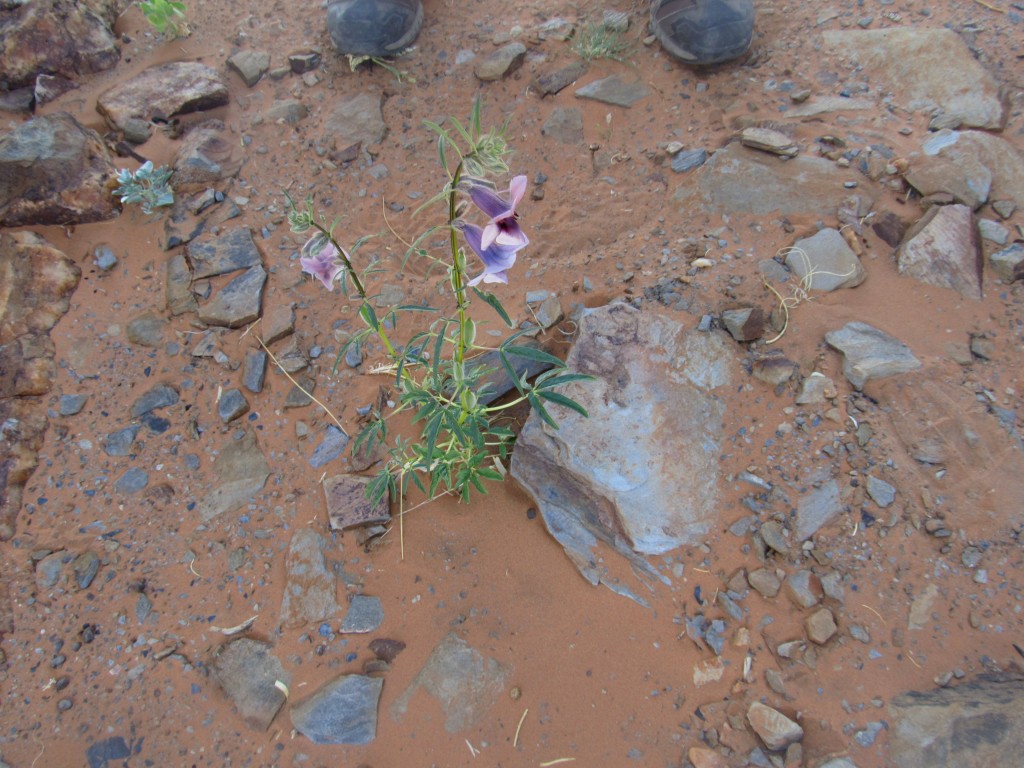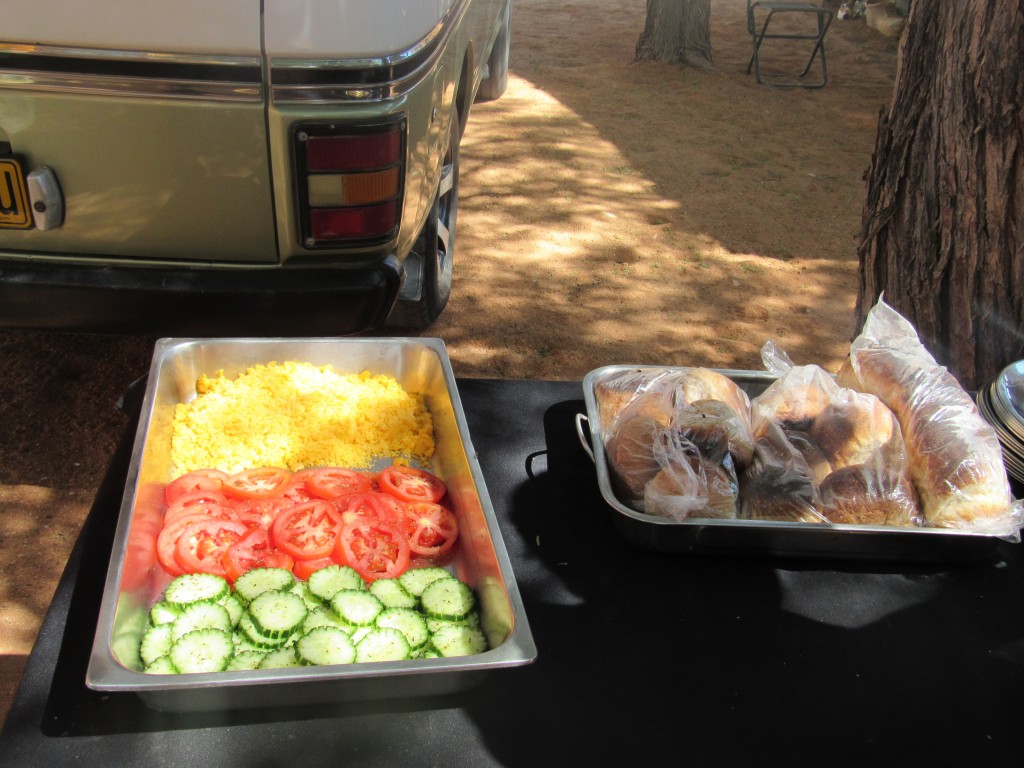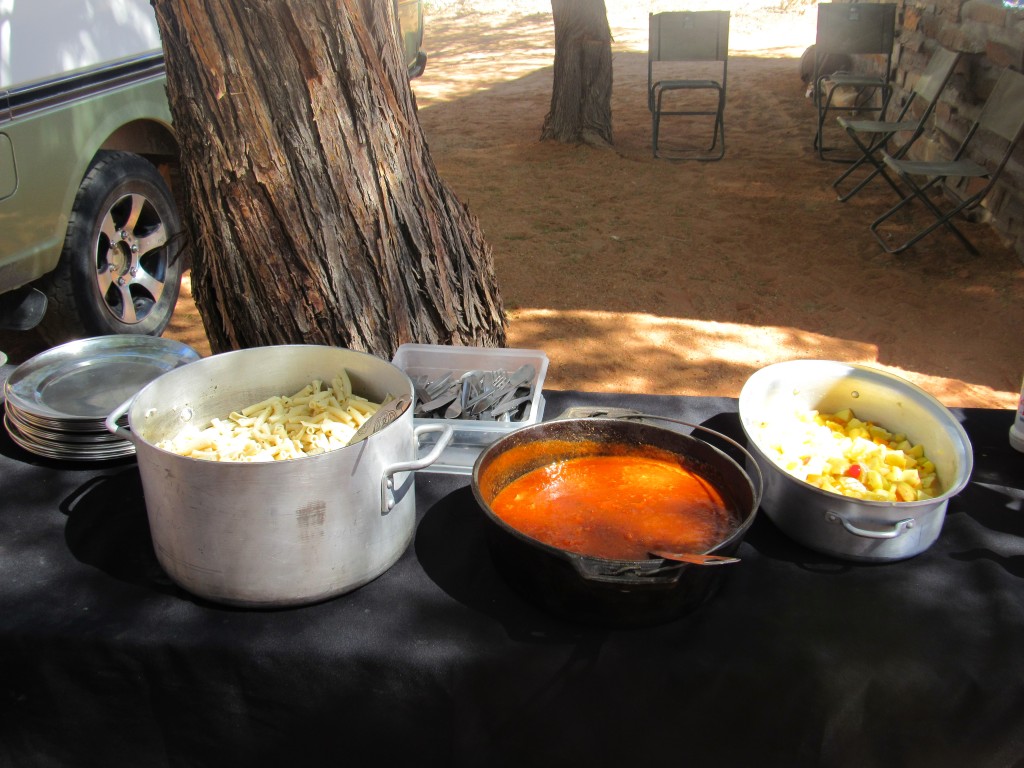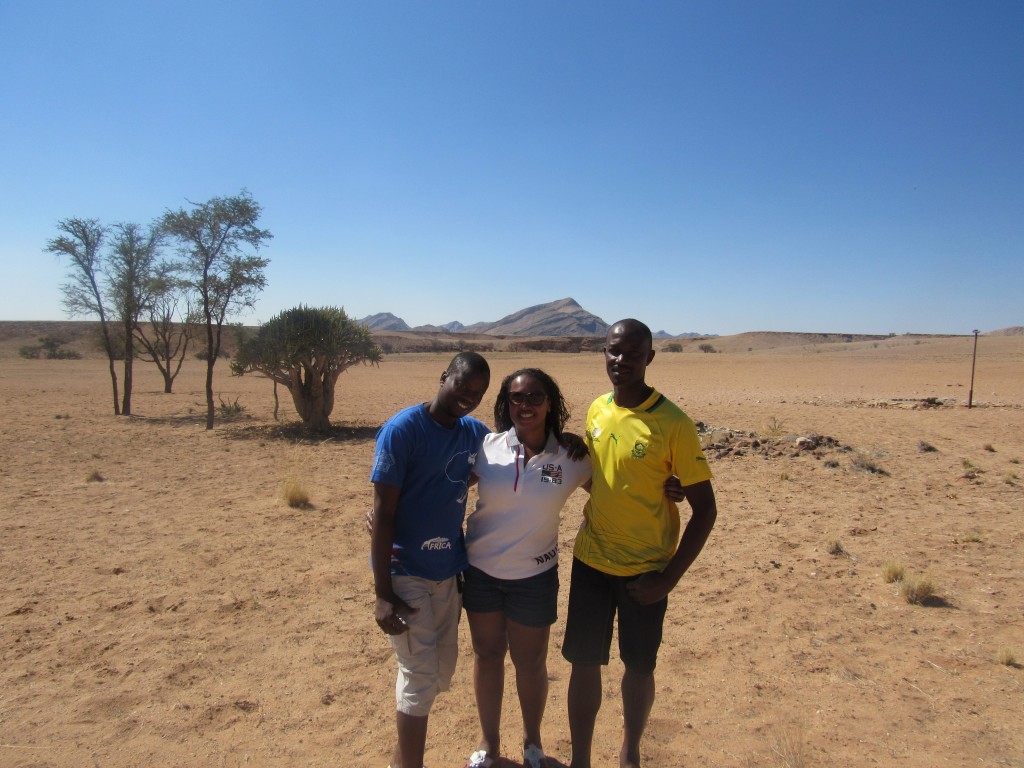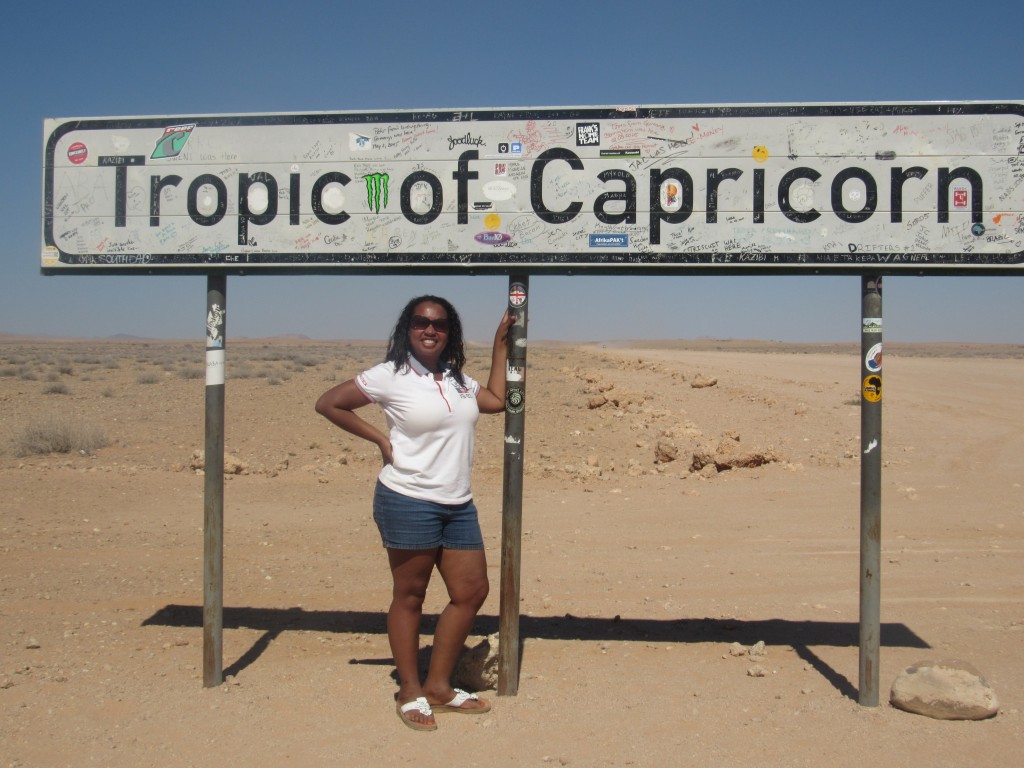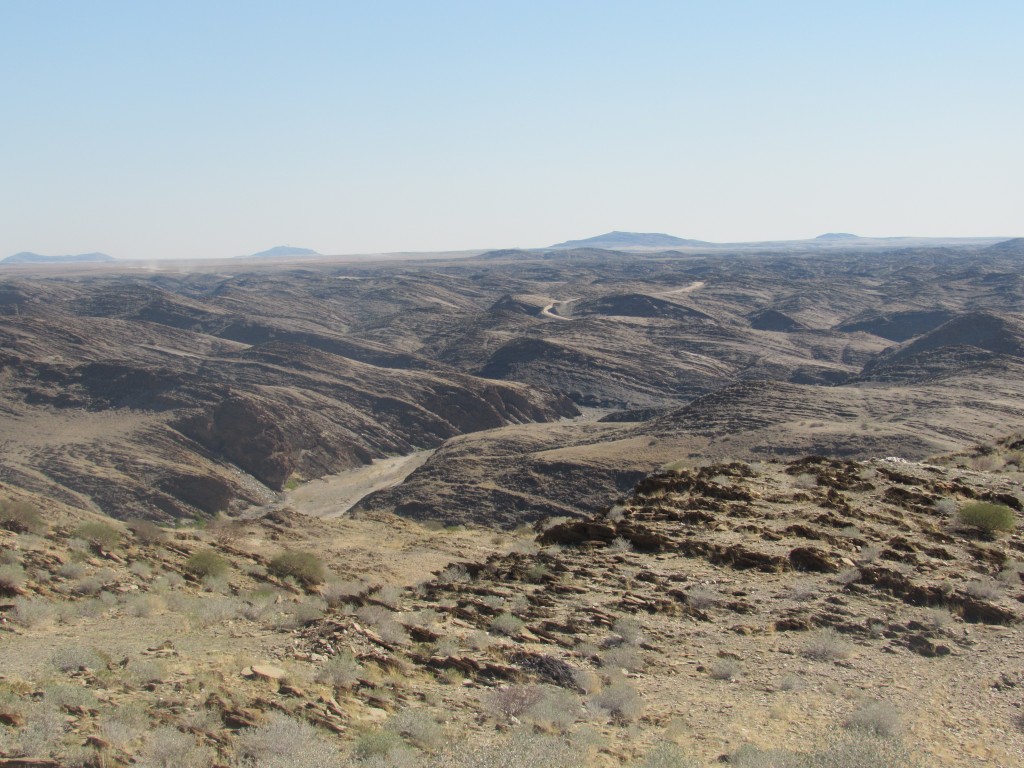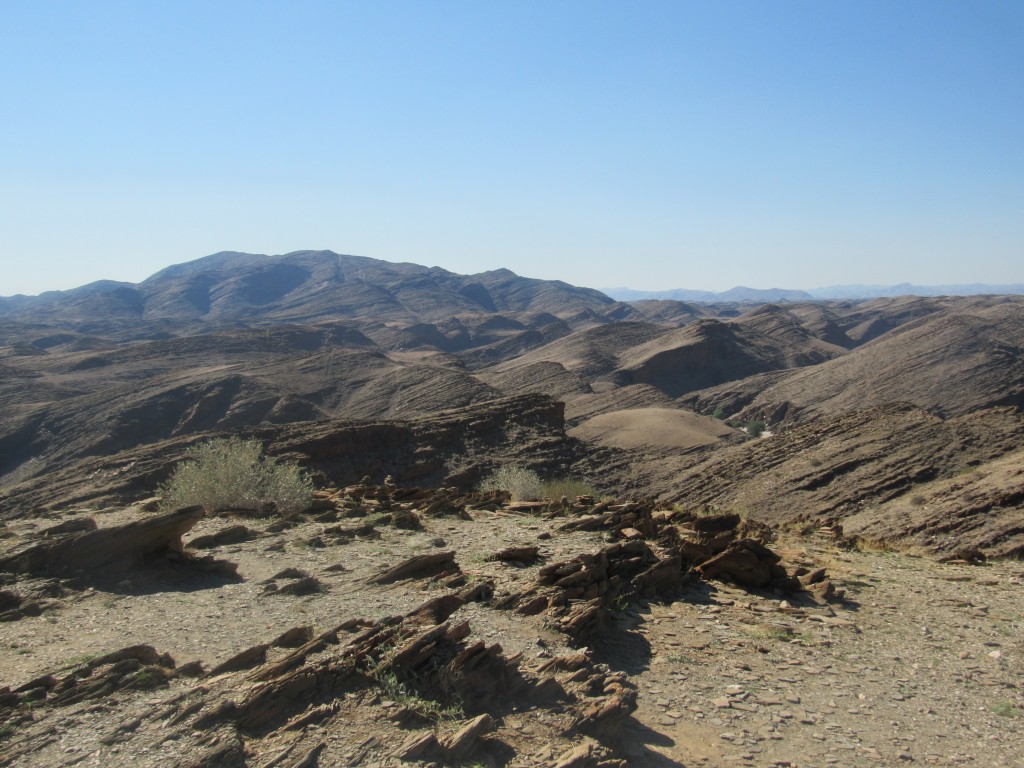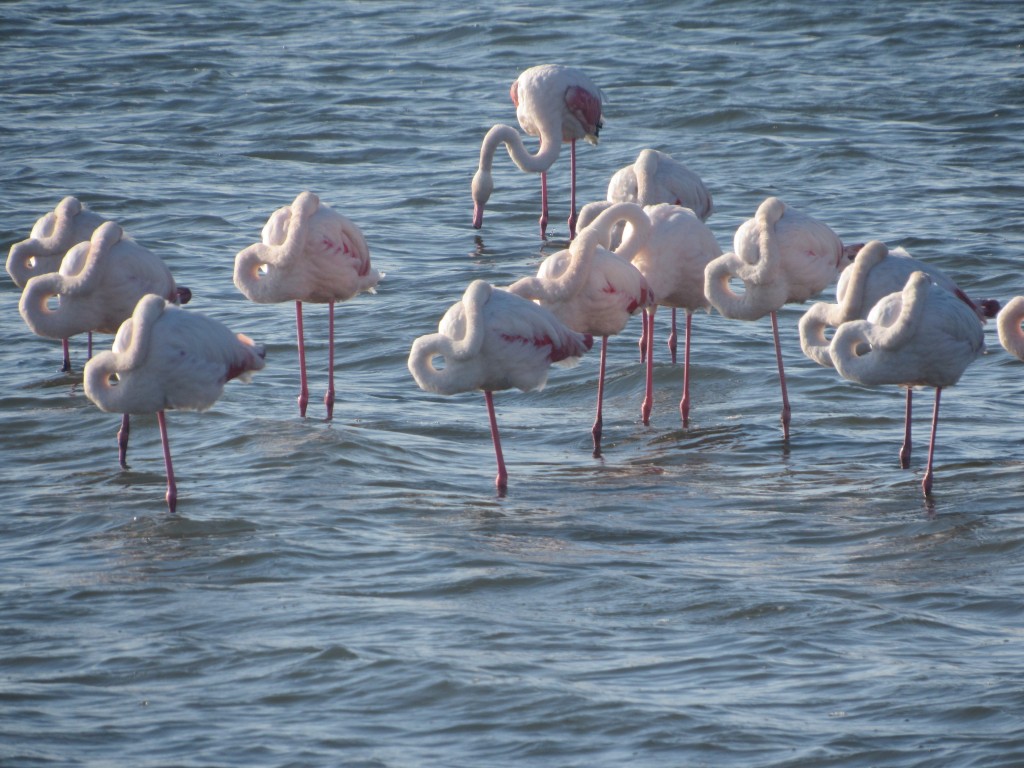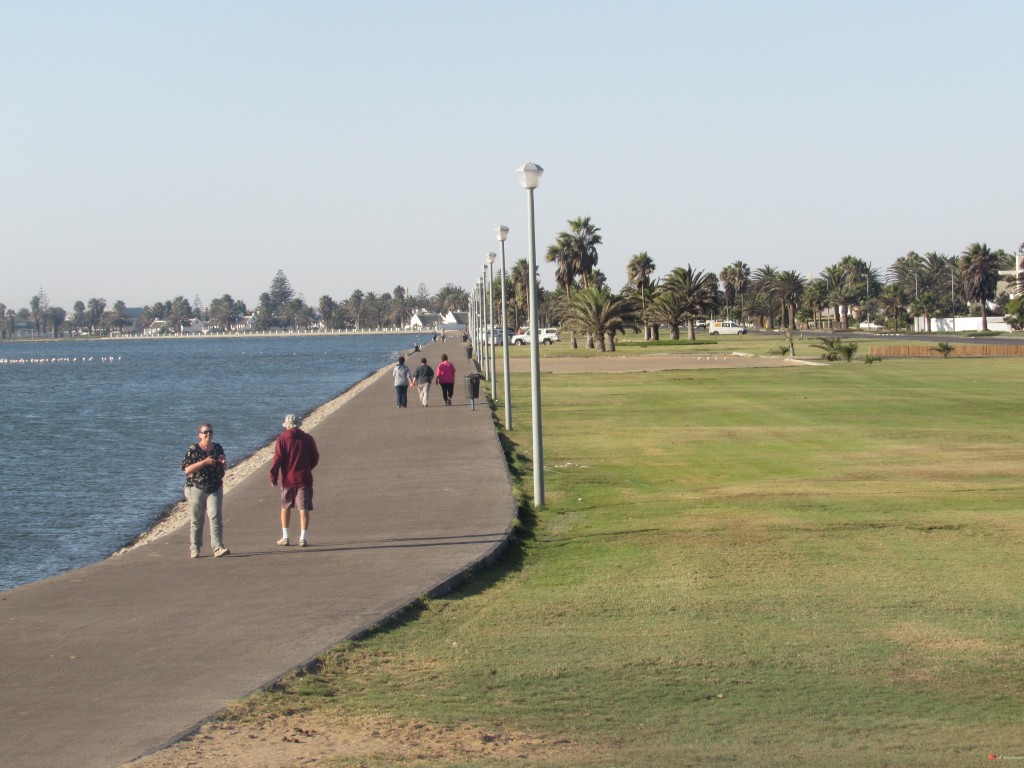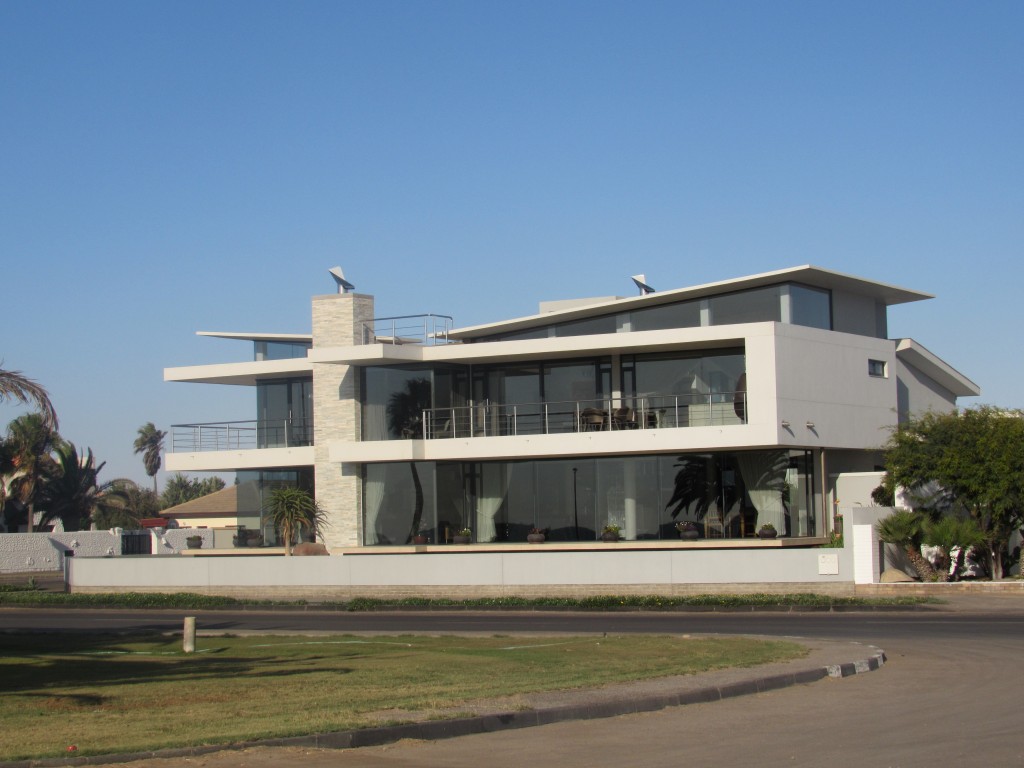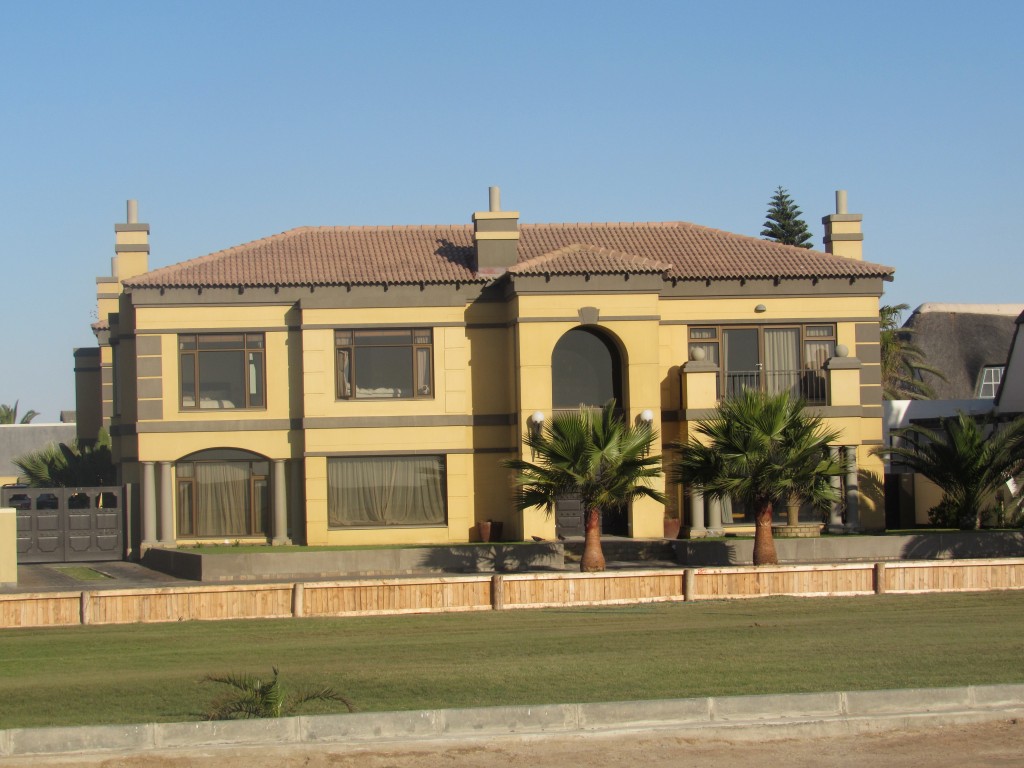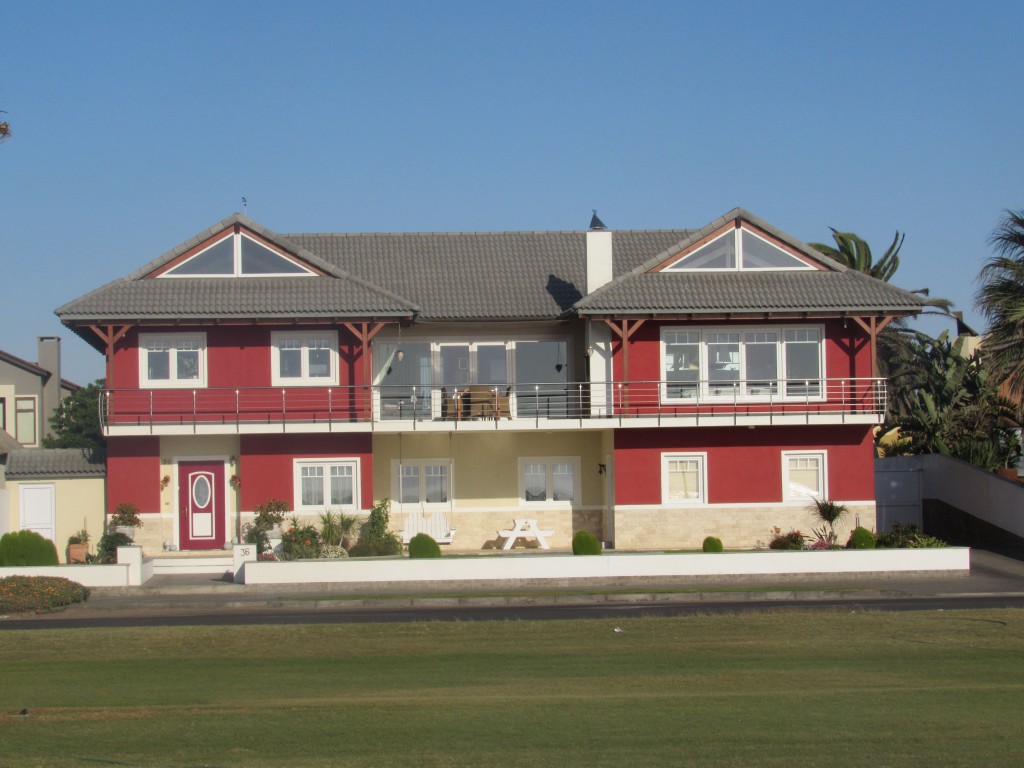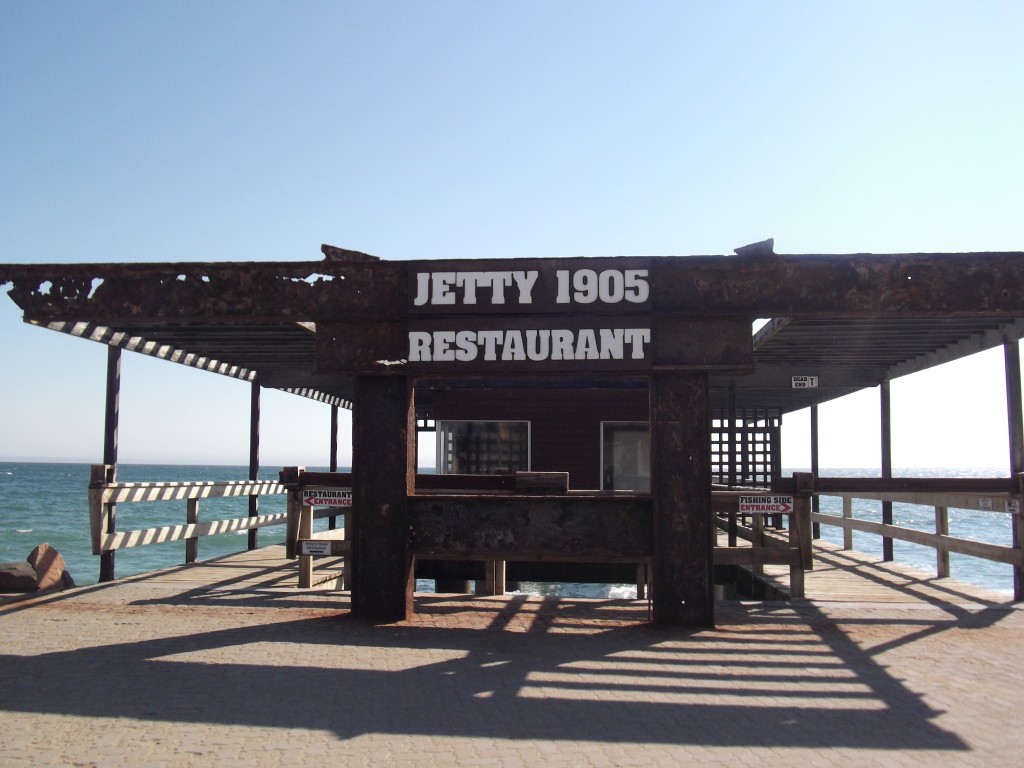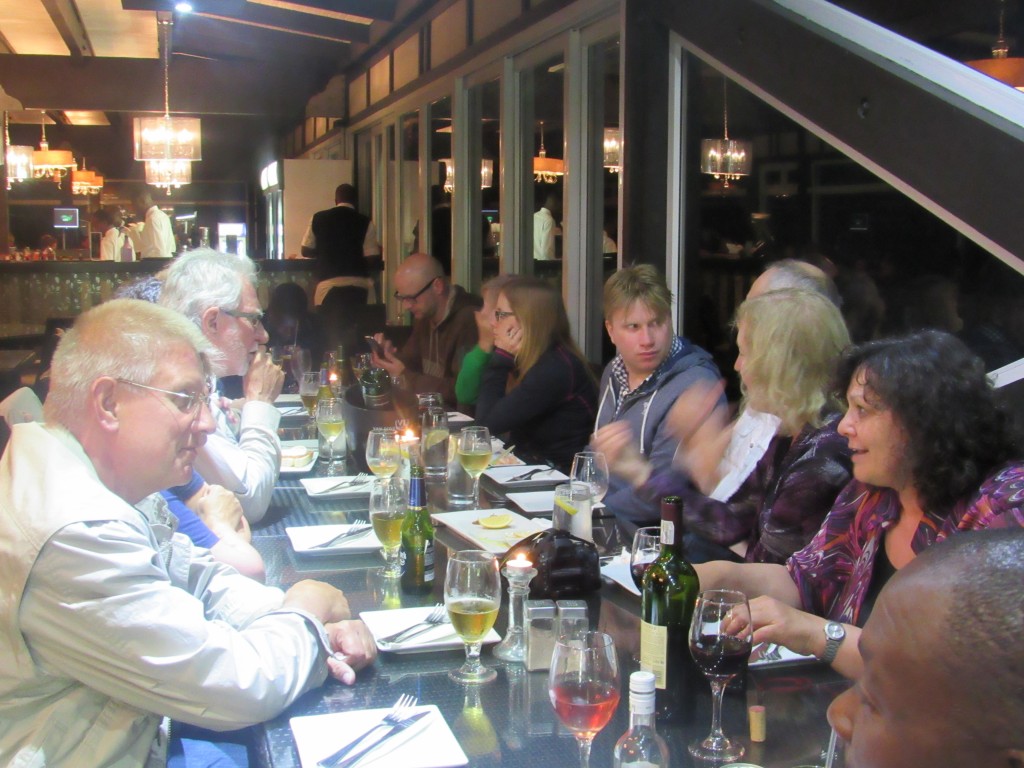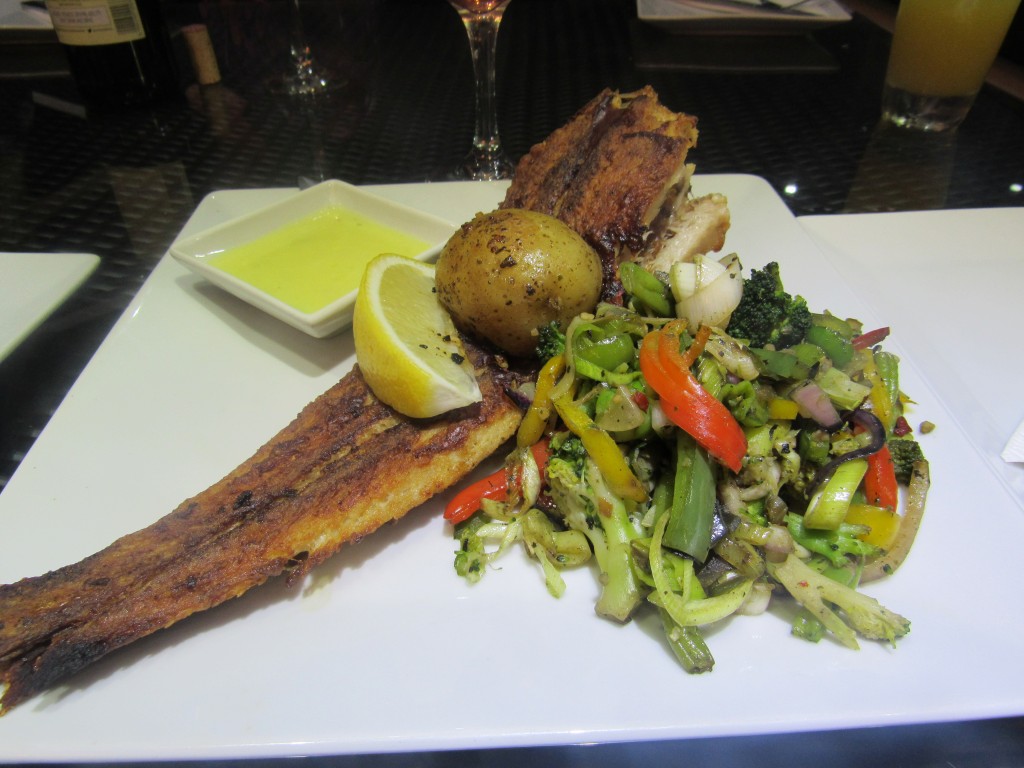The post Namibia Overland: Swakopmund first appeared on The Travel Sista.
]]>I ate a hot cooked breakfast, then left around 9:00 am for my quad biking and sand boarding tour. Lucky for me, I was the only one scheduled and it turned into a private tour. I was fitted for a helmet, then my guide and I hit the sand dunes, riding along a set trail so we wouldn’t injure or kill the protected wildlife there. The landscape was magnificent, but I was hopelessly lost as we traveled deeper and deeper into the maze of sand dunes.
About an hour later, we stopped at one of the larger dunes for my sandboarding adventure. Since it was my first time, I had chosen the “Lie Down” sandboarding style (where you lie on the board and ride the dunes headfirst). My guide waxed the board and rubbed it with sand to prepare it for riding. Then he had me lay down on the board with the front slightly raised and my feet hanging over the back. I was a tad bit nervous and briefly questioned my sanity as I looked down. But I gave the OK and my guide nudged the board sending me off. My adrenaline kicked in as I sailed down the dune at breakneck speed. The ride was exhilarating but over in seconds, and I had to hike back up the dune (which was a chore). I rode down a second time and luckily this time my guide rode me back up on the quad bike.
After two runs, I’d had enough sand boarding and so we took off on the quad bikes to search for desert wildlife. The desert appeared lifeless at first glance, but upon a closer look it was alive with a variety of desert-adapted wildlife. My guide pointed out various hidden animals, including geckos, lizards, beetles, and spiders. The final highlight was seeing where the edge of the desert meets the Atlantic Ocean.
By the end of the ride, I was dirty, full of sand, and ready for a hot shower. After freshening up, I headed off to explore the town of Swakopmund. Situated on Namibia’s coast, Swakopmund is like a little Deutschland in Africa. The German colonial influence is present in the architecture and general ambience, and many of the retail stores and restaurants are German-owned.
I had worked up a serious appetite and stopped for lunch at The Fish Deli, a local seafood restaurant, where I ate fried hake and chips. Later, I walked the sea-front promenade, eating homemade ice cream while viewing the jetty, lighthouse, and exquisite waterfront homes in the area. I would be remiss if I didn’t admit I had mixed emotions about these obvious remnants of colonialism and apartheid.
I spent the last evening talking with one of my tour guides, Alfons, a native Namibian. We talked about past and present Namibian history, his heritage as a member of the Herero tribe, his multilingualism (English, Herero, and Afrikaans, which was required during the apartheid period), and his future plans to return to his village in northern Namibia. I left with a greater understanding of Namibia’s storied past and rich culture, and a strong desire to see more. I look forward to returning.
Have you been to Swakopmund, Namibia’s adventure capital? Did you participate in any adventure activities? Share your comments below.
Share ThisThe post Namibia Overland: Swakopmund first appeared on The Travel Sista.
]]>The post Namibia Overland: Namib Desert to Swakopmund first appeared on The Travel Sista.
]]>After a spectacular Day 5 in the world’s oldest desert, we hit the road early and headed towards our final stop, Swakopmund. En route we made several stops, the first at a farm ranch where we took a guided hike with a local expert. He walked barefoot as he showed us native plants and trees and described how his Bushmen ancestors survived in the harsh desert conditions.
We were fascinated as he shared a story of how he and two friends hiked through the Namib Desert, all the way to the Atlantic Ocean, carrying little food and water. They used dried reeds and empty ostrich eggs to collect water underneath the earth, then buried the eggs along the trail for their return trek back. Contrary to conventional wisdom, he said they drank limited water because excess consumption would lead to abdominal issues and exhaustion in the hot desert sun. Our excursion ended with a discussion of Namibia’s colonial history and another great lunch prepared by our guides.
Next, we stopped at the Tropic of Capricorn sign, which bore special significance to me since Capricorn is my zodiac sign. From there, we stopped at the Moon Landscape, so named for its distinctive moon-like topography. Barren and desolate, the Moon Landscape was formed when the Swakop River carved deep canyons into the granite rock. It was a stark reminder of nature’s power and beauty.
We continued on to Walvis Bay, where we briefly stopped to walk along the seafront promenade and see the resident flamingos on the lagoon. This also gave us the perfect opportunity to view the extravagant waterfront mansions.
Thirty minutes later we made it to Swakopmund and our first stop was at Desert Explorers, an activity center which offers a variety of adventure activities including skydiving, quad biking, paragliding and sandboarding. I couldn’t leave Namibia’s adventure capital without indulging, so I chose a 3-hour combo quad biking and sandboarding tour for 9:00 a.m. the next morning.
By mid-afternoon, we finally arrived at our B&B, Stay @ Swakop Guesthouse, where I chilled until dinner. Our last group dinner was at Jetty 1905, a fancy restaurant located at the end of a landmark jetty that reaches out some 900 feet into sea. I had wine and grilled sole, served with potatoes and a vegetable medley, all of which was delicious. It was a fun evening with my new friends.
Stayed tuned for Day 7
Have you traveled to Namibia? What was your favorite thing to do? Share your comments below.
Share ThisThe post Namibia Overland: Namib Desert to Swakopmund first appeared on The Travel Sista.
]]>